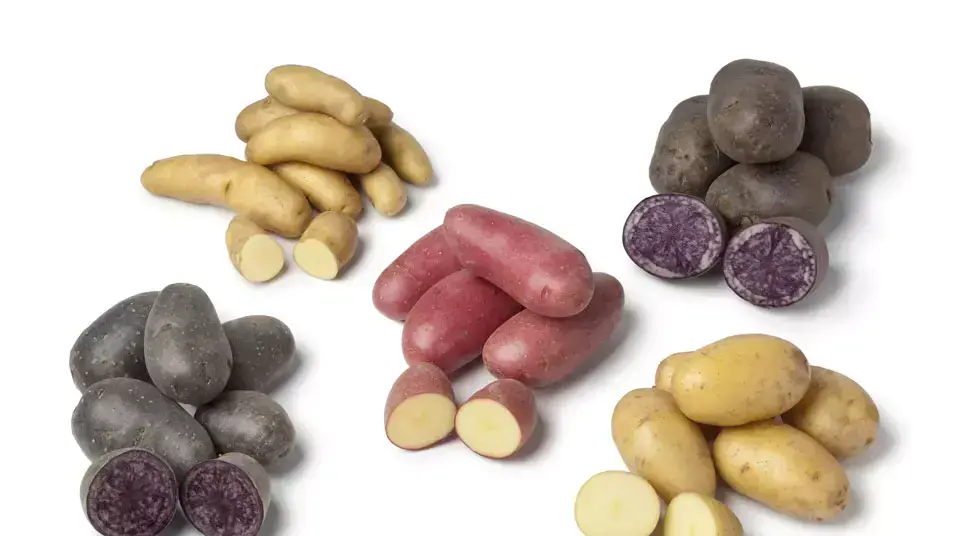Enlarge image
Yellow desert, green potato fields - and a black lava field
Photo: NASA Earth Observatory
Whether as frozen fries or chips, whether freshly processed or in the form of starch or flour - every American woman consumes around 50 kilograms of potatoes per year.
Or any American.
It's just a statistical average anyway.
By the way, for classification: the value is about a fifth below that in Germany.
But if you reach for the potato in the USA, or enjoy the vegetable in a more or less processed form, then it is not unlikely that it was grown in the state of Idaho.
Because it has been the number one in the production of tubers for more than half a century.
About a third of all potatoes grown in the country come from, yes,
Potato State
.
While a brightly lit ball is lowered in New York's Times Square every New Year's Eve, a giant potato is dropped in Boise, the capital of Idaho, for the same occasion.
That's how important the fruit is for the state's self-image.
Cultivation is particularly thriving on the Plains of the Snake River in southern Idaho.
It is precisely this region, specifically the area around the city of Idaho Falls, that is shown in the image above from the US satellite »Landsat 8«.
Geologically, the area has a turbulent history.
This has to do with a so-called hotspot in the earth's crust.
The North American tectonic plate once moved over this.
The region was charged with magma, so to speak, and the earth's crust was thicker than in the surrounding area - and when it later cooled, this was exactly what caused the heavy piece of land to sink and the wide plain to form.
Incidentally, the same hotspot that was responsible for the formation of the huge area now ensures that hot springs such as Grand Prismatic Spring bubble and geysers such as Old Faithful regularly emit their fountains in nearby Yellowstone National Park.
Little rain, high temperature
The traces of volcanism are still clearly visible on the Snake River plain.
In the middle of the potato-growing region is the Hell's Half Acre lava field, which in places is reminiscent of a lunar landscape.
There was volcanic activity in the 390 square kilometer area around 5000 years ago.
The lava came out of a fissure volcano and poured into the surrounding area.
However, the lava field only became as desolate as it looks today as a result of human intervention.
Giant arborvitae could and did grow on the raw subsoil - until they were cut down in the 19th and first half of the 20th century.
Today, human intervention mainly affects potato cultivation.
Although the soil in the wide plain is fertile due to its volcanic origin, the region actually receives far too little precipitation for agriculture.
Only about 20 to 30 liters per year and square meter come together.
The desert can only be transformed into cultivated land with the help of countless circular irrigation systems that pump their water from underground.
From space, the contrast between the arid, yellow surroundings and the lush green, irrigated fields is particularly clear.
Agriculture accounts for as much as 98 percent of Idaho's water use.
It's not sustainable.
For this reason, consumption is monitored as best as possible – satellites are also indispensable for this.
How difficult the water situation is, however, was shown last year.
The potato crop in Idaho was down about 10 percent.
The reason for this was the lack of water during a long heatwave in summer.
chs








